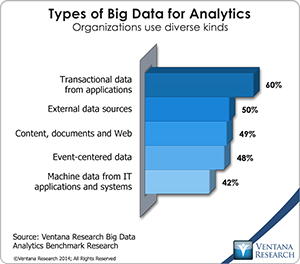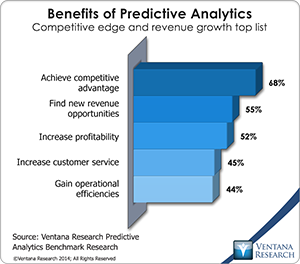Actuate, a company known for powering BIRT, the open source business intelligence technology, has been delivering large-scale consumer and industrial applications for more than 20 years. In December the company announced it would be acquired by OpenText of Ontario, Canada. OpenText is Canada’s largest software vendor with more than 8,000 employees and a portfolio of enterprise information management products.
Actuate, a company known for powering BIRT, the open source business intelligence technology, has been delivering large-scale consumer and industrial applications for more than 20 years. In December the company announced it would be acquired by OpenText of Ontario, Canada. OpenText is Canada’s largest software vendor with more than 8,000 employees and a portfolio of enterprise information management products. It serves primarily large companies. The attraction of Actuate for such a company can be seen in a number of its legacy assets as well as more current acquisitions and developments but also its existing customer base. It was also awarded a 2014 Ventana Research Business Leadership Award.
Actuate’s foundational asset is BIRT (Business Intelligence and Reporting Tools) and its developer community. With more than 3.5 million developers and 13.5 million downloads, the BIRT developer environment is used in a variety of companies on a global basis. The BIRT community includes Java developers as well as sophisticated business intelligence design professionals, which I discussed in my outline of analytics personas. BIRT is a key project for the Eclipse Foundation, an open source integrated development environment familiar to many developers. BIRT provides a graphical interface to build reports at a granular level, and being Java-based, it provides ways to grapple with data and build data connections in a virtually limitless fashion. While new programming models and scripting languages, such as Python and Ruby, are gaining favor, Java remains a primary coding language for large-scale applications. One of the critical capabilities for business intelligence tools is to provide information in a visually compelling and easily usable format. BIRT can provide pixel-perfect reporting and granular adjustments to visualization objects. This benefit is coupled with the advantage of the open source approach: availability of skilled technical human resources on a global basis at relatively low cost.
Last year Actuate introduced iHub 3.1, a deployment server that integrates data from multiple sources and distributes content to end users. IHub has connectors to most database systems including modern approaches such as Hadoop. While Actuate provides the most common connectors out of the box, BIRT and the Java framework allow any data from any system to be brought into the fold. This type of approach to big data becomes particularly compelling for the ability to  integrate both large-scale data and diverse data sources. The challenge is that the work sometimes requires customization, but for large-scale enterprise applications, developers often do this to deliver capabilities that would not otherwise be accessible to end users. Our benchmark research into big data analytics shows that organizations need to access many data sources for analysis including transactional data (60%), external data (50%), content (49%) and event-centric data (48%).
integrate both large-scale data and diverse data sources. The challenge is that the work sometimes requires customization, but for large-scale enterprise applications, developers often do this to deliver capabilities that would not otherwise be accessible to end users. Our benchmark research into big data analytics shows that organizations need to access many data sources for analysis including transactional data (60%), external data (50%), content (49%) and event-centric data (48%).
In 2014, Actuate introduced iHub F-Type, which enables users to build reports, visualizations and applications and deploy them in the cloud. F-Type mitigates the need to build a separate deployment infrastructure and can act as both a “sandbox” for development and a broader production environment. Using REST-based interfaces, application developers can use F-Type to prototype and scale embedded reports for their custom applications. F-Type is delivered in the cloud, has full enterprise capabilities out of the box, and is free up to a metered output capacity of 50MB. The approach uses output metering rather than input metering used by some technology vendors. This output metering approach encourages scaling of data and focuses organizations on which specific reports they should deployed to their employees and customers.
Also in 2014, Actuate introduced BIRT Analytics 5.0, a self-service discovery platform that includes advanced analytic capabilities. In my review of BIRT Analytics, I noted its  abilities to handle large data volumes and do intuitive predictive analytics. Organizations in our research said that predictive analytics provides advantages such as achieving competitive advantage (for 68%), new revenue opportunities (55%) and increased profitability (52%). Advances in BIRT Analytics 5.0 include integration with iHub 3.1 so developers can bring self-service discovery into their dashboards and public APIs for use in custom applications.
abilities to handle large data volumes and do intuitive predictive analytics. Organizations in our research said that predictive analytics provides advantages such as achieving competitive advantage (for 68%), new revenue opportunities (55%) and increased profitability (52%). Advances in BIRT Analytics 5.0 include integration with iHub 3.1 so developers can bring self-service discovery into their dashboards and public APIs for use in custom applications.
The combination of iHub, the F-Type freemium model, BIRT Analytics and the granular controls that BIRT provides to developers and users presents a coherent strategy especially in the context of embedded applications. Actuate CEO Pete Cittadini asserts that the company has the most APIs of any business intelligence vendor. The position is a good one especially since embedded technology is becoming important in the context of custom applications and in the so-called Internet-of-Things. The ability to make a call into another application instead of custom-coding the function itself within the workflow of an end-user application cuts developer time significantly. Furthermore, the robustness of the Actuate platform enables applications to scale almost without limit.
OpenText and Actuate have similarities, such as the maturity of the organizations and the types of large clients they  service. It will be interesting to see how Actuate’s API strategy will impact the next generation of OpenText’s analytic applications and to what degree Actuate remains an independent business unit in marketing to customers. As a company that has been built through acquisitions, OpenText has a mature onboarding process that usually keeps the new business unit operating separately. OpenText CEO Mark Barrenechea outlines his perspective on the acquisition which will bolster its portfolio for information optimization and analytics or what it calls enterprise information management. In fact our benchmark research on information optimization finds that analytics is the top driver for deploying information in two thirds of organizations. The difference this time may be that today’s enterprises are asking for more integrated information which embeds analytics rather than having different interfaces for each of the applications or tools. The acquisition of Actuate by OpenText has now closed and now changes will occur to Actuate that should be watched closely to determine its path forward and it potential higher value for customers within OpenText.
service. It will be interesting to see how Actuate’s API strategy will impact the next generation of OpenText’s analytic applications and to what degree Actuate remains an independent business unit in marketing to customers. As a company that has been built through acquisitions, OpenText has a mature onboarding process that usually keeps the new business unit operating separately. OpenText CEO Mark Barrenechea outlines his perspective on the acquisition which will bolster its portfolio for information optimization and analytics or what it calls enterprise information management. In fact our benchmark research on information optimization finds that analytics is the top driver for deploying information in two thirds of organizations. The difference this time may be that today’s enterprises are asking for more integrated information which embeds analytics rather than having different interfaces for each of the applications or tools. The acquisition of Actuate by OpenText has now closed and now changes will occur to Actuate that should be watched closely to determine its path forward and it potential higher value for customers within OpenText.





